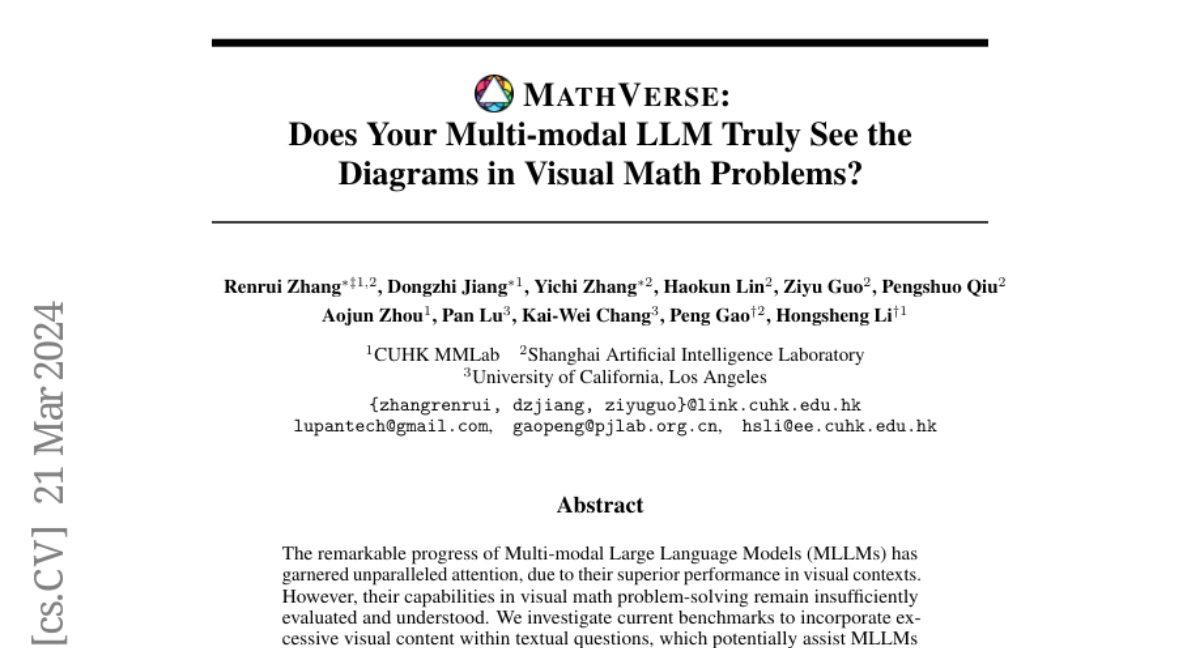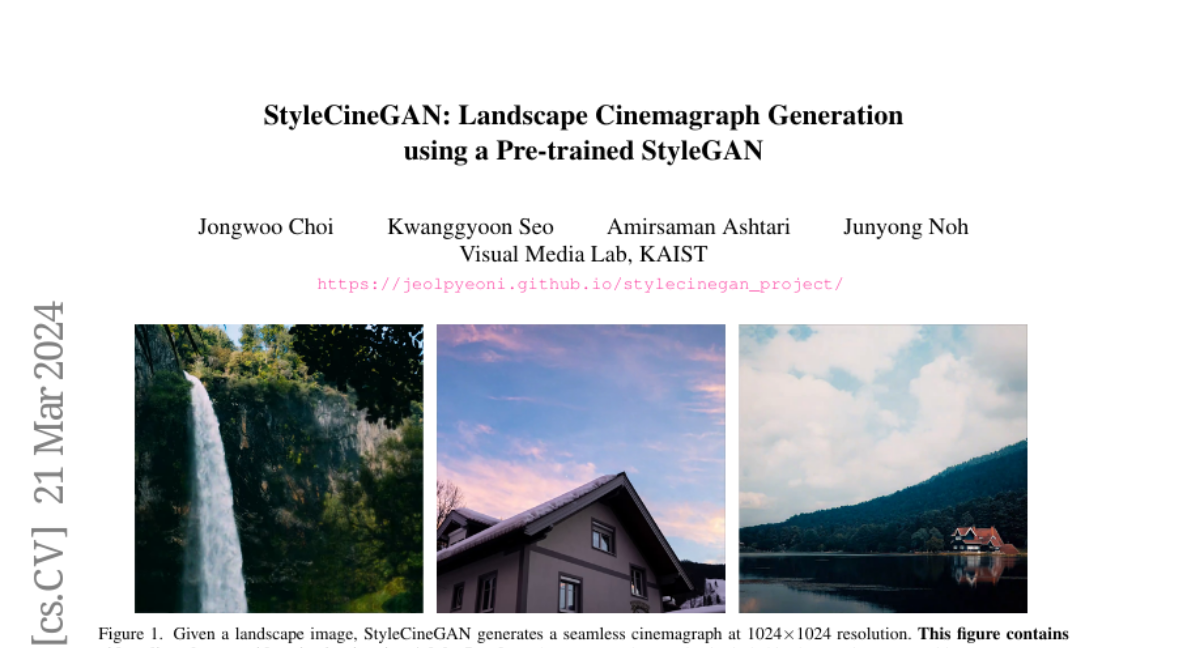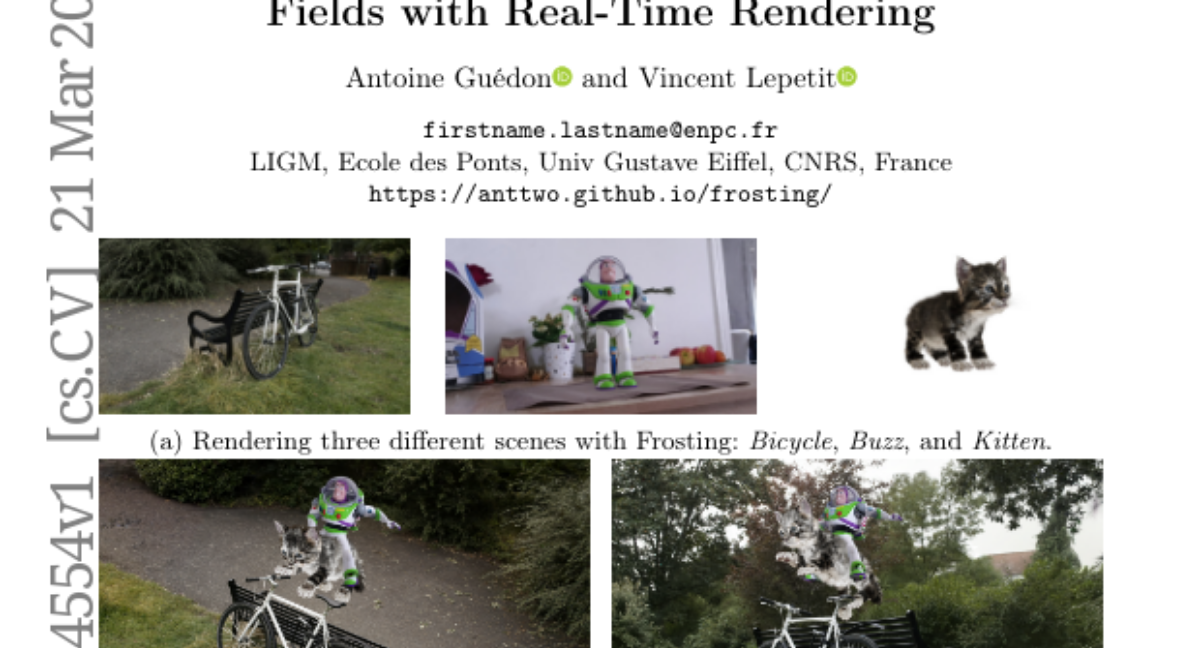MathVerse: Does Your Multi-modal LLM Truly See the Diagrams in Visual Math Problems?

The remarkable progress of Multi-modal Large Language Models (MLLMs) has garnered unparalleled attention, due to their superior performance in visual contexts. However, their capabilities in visual math problem-solving remain insufficiently evaluated and understood. We investigate current benchmarks to incorporate excessive visual content within textual questions, which potentially assist MLLMs in deducing answers without truly interpreting the input diagrams. To this end, we introduce MathVerse, an all-around visual math benchmark designed for an equitable and in-depth evaluation of MLLMs. We meticulously collect 2,612 high-quality, multi-subject math problems with diagrams from publicly available sources. Each problem is then transformed by human annotators into six distinct versions, each offering varying degrees of information content in multi-modality, contributing to 15K test samples in total. This approach allows MathVerse to comprehensively assess whether and how much MLLMs can truly understand the visual diagrams for mathematical reasoning. In addition, we propose a Chain-of-Thought (CoT) evaluation strategy for a fine-grained assessment of the output answers. Rather than naively judging True or False, we employ GPT-4(V) to adaptively extract crucial reasoning steps, and then score each step with detailed error analysis, which can reveal the intermediate CoT reasoning quality by MLLMs. We hope the MathVerse benchmark may provide unique insights to guide the future development of MLLMs. Project page: https://mathverse-cuhk.github.io
DreamReward: Text-to-3D Generation with Human Preference

3D content creation from text prompts has shown remarkable success recently. However, current text-to-3D methods often generate 3D results that do not align well with human preferences. In this paper, we present a comprehensive framework, coined DreamReward, to learn and improve text-to-3D models from human preference feedback. To begin with, we collect 25k expert comparisons based on a systematic annotation pipeline including rating and ranking. Then, we build Reward3D -- the first general-purpose text-to-3D human preference reward model to effectively encode human preferences. Building upon the 3D reward model, we finally perform theoretical analysis and present the Reward3D Feedback Learning (DreamFL), a direct tuning algorithm to optimize the multi-view diffusion models with a redefined scorer. Grounded by theoretical proof and extensive experiment comparisons, our DreamReward successfully generates high-fidelity and 3D consistent results with significant boosts in prompt alignment with human intention. Our results demonstrate the great potential for learning from human feedback to improve text-to-3D models.
Cobra: Extending Mamba to Multi-Modal Large Language Model for Efficient Inference

In recent years, the application of multimodal large language models (MLLM) in various fields has achieved remarkable success. However, as the foundation model for many downstream tasks, current MLLMs are composed of the well-known Transformer network, which has a less efficient quadratic computation complexity. To improve the efficiency of such basic models, we propose Cobra, a linear computational complexity MLLM. Specifically, Cobra integrates the efficient Mamba language model into the visual modality. Moreover, we explore and study various modal fusion schemes to create an effective multi-modal Mamba. Extensive experiments demonstrate that (1) Cobra achieves extremely competitive performance with current computationally efficient state-of-the-art methods, \textit{e.g.}, LLaVA-Phi, TinyLLaVA, and MobileVLM v2, and has faster speed due to Cobra's linear sequential modeling. (2) Interestingly, the results of closed-set challenging prediction benchmarks show that Cobra performs well in overcoming visual illusions and spatial relationship judgments. (3) Notably, Cobra even achieves comparable performance to LLaVA with about 43% of the number of parameters. We will make all codes of Cobra open-source and hope that the proposed method can facilitate future research on complexity problems in MLLM. Our project page is available at: https://sites.google.com/view/cobravlm.
AnyV2V: A Plug-and-Play Framework For Any Video-to-Video Editing Tasks

Video-to-video editing involves editing a source video along with additional control (such as text prompts, subjects, or styles) to generate a new video that aligns with the source video and the provided control. Traditional methods have been constrained to certain editing types, limiting their ability to meet the wide range of user demands. In this paper, we introduce AnyV2V, a novel training-free framework designed to simplify video editing into two primary steps: (1) employing an off-the-shelf image editing model (e.g. InstructPix2Pix, InstantID, etc) to modify the first frame, (2) utilizing an existing image-to-video generation model (e.g. I2VGen-XL) for DDIM inversion and feature injection. In the first stage, AnyV2V can plug in any existing image editing tools to support an extensive array of video editing tasks. Beyond the traditional prompt-based editing methods, AnyV2V also can support novel video editing tasks, including reference-based style transfer, subject-driven editing, and identity manipulation, which were unattainable by previous methods. In the second stage, AnyV2V can plug in any existing image-to-video models to perform DDIM inversion and intermediate feature injection to maintain the appearance and motion consistency with the source video. On the prompt-based editing, we show that AnyV2V can outperform the previous best approach by 35\% on prompt alignment, and 25\% on human preference. On the three novel tasks, we show that AnyV2V also achieves a high success rate. We believe AnyV2V will continue to thrive due to its ability to seamlessly integrate the fast-evolving image editing methods. Such compatibility can help AnyV2V to increase its versatility to cater to diverse user demands.
Efficient Video Diffusion Models via Content-Frame Motion-Latent Decomposition

Video diffusion models have recently made great progress in generation quality, but are still limited by the high memory and computational requirements. This is because current video diffusion models often attempt to process high-dimensional videos directly. To tackle this issue, we propose content-motion latent diffusion model (CMD), a novel efficient extension of pretrained image diffusion models for video generation. Specifically, we propose an autoencoder that succinctly encodes a video as a combination of a content frame (like an image) and a low-dimensional motion latent representation. The former represents the common content, and the latter represents the underlying motion in the video, respectively. We generate the content frame by fine-tuning a pretrained image diffusion model, and we generate the motion latent representation by training a new lightweight diffusion model. A key innovation here is the design of a compact latent space that can directly utilizes a pretrained image diffusion model, which has not been done in previous latent video diffusion models. This leads to considerably better quality generation and reduced computational costs. For instance, CMD can sample a video 7.7$\times$ faster than prior approaches by generating a video of 512$\times$1024 resolution and length 16 in 3.1 seconds. Moreover, CMD achieves an FVD score of 212.7 on WebVid-10M, 27.3% better than the previous state-of-the-art of 292.4.
GRM: Large Gaussian Reconstruction Model for Efficient 3D Reconstruction and Generation

We introduce GRM, a large-scale reconstructor capable of recovering a 3D asset from sparse-view images in around 0.1s. GRM is a feed-forward transformer-based model that efficiently incorporates multi-view information to translate the input pixels into pixel-aligned Gaussians, which are unprojected to create a set of densely distributed 3D Gaussians representing a scene. Together, our transformer architecture and the use of 3D Gaussians unlock a scalable and efficient reconstruction framework. Extensive experimental results demonstrate the superiority of our method over alternatives regarding both reconstruction quality and efficiency. We also showcase the potential of GRM in generative tasks, i.e., text-to-3D and image-to-3D, by integrating it with existing multi-view diffusion models. Our project website is at: https://justimyhxu.github.io/projects/grm/.
MyVLM: Personalizing VLMs for User-Specific Queries

Recent large-scale vision-language models (VLMs) have demonstrated remarkable capabilities in understanding and generating textual descriptions for visual content. However, these models lack an understanding of user-specific concepts. In this work, we take a first step toward the personalization of VLMs, enabling them to learn and reason over user-provided concepts. For example, we explore whether these models can learn to recognize you in an image and communicate what you are doing, tailoring the model to reflect your personal experiences and relationships. To effectively recognize a variety of user-specific concepts, we augment the VLM with external concept heads that function as toggles for the model, enabling the VLM to identify the presence of specific target concepts in a given image. Having recognized the concept, we learn a new concept embedding in the intermediate feature space of the VLM. This embedding is tasked with guiding the language model to naturally integrate the target concept in its generated response. We apply our technique to BLIP-2 and LLaVA for personalized image captioning and further show its applicability for personalized visual question-answering. Our experiments demonstrate our ability to generalize to unseen images of learned concepts while preserving the model behavior on unrelated inputs.
ReNoise: Real Image Inversion Through Iterative Noising

Recent advancements in text-guided diffusion models have unlocked powerful image manipulation capabilities. However, applying these methods to real images necessitates the inversion of the images into the domain of the pretrained diffusion model. Achieving faithful inversion remains a challenge, particularly for more recent models trained to generate images with a small number of denoising steps. In this work, we introduce an inversion method with a high quality-to-operation ratio, enhancing reconstruction accuracy without increasing the number of operations. Building on reversing the diffusion sampling process, our method employs an iterative renoising mechanism at each inversion sampling step. This mechanism refines the approximation of a predicted point along the forward diffusion trajectory, by iteratively applying the pretrained diffusion model, and averaging these predictions. We evaluate the performance of our ReNoise technique using various sampling algorithms and models, including recent accelerated diffusion models. Through comprehensive evaluations and comparisons, we show its effectiveness in terms of both accuracy and speed. Furthermore, we confirm that our method preserves editability by demonstrating text-driven image editing on real images.
Explorative Inbetweening of Time and Space

We introduce bounded generation as a generalized task to control video generation to synthesize arbitrary camera and subject motion based only on a given start and end frame. Our objective is to fully leverage the inherent generalization capability of an image-to-video model without additional training or fine-tuning of the original model. This is achieved through the proposed new sampling strategy, which we call Time Reversal Fusion, that fuses the temporally forward and backward denoising paths conditioned on the start and end frame, respectively. The fused path results in a video that smoothly connects the two frames, generating inbetweening of faithful subject motion, novel views of static scenes, and seamless video looping when the two bounding frames are identical. We curate a diverse evaluation dataset of image pairs and compare against the closest existing methods. We find that Time Reversal Fusion outperforms related work on all subtasks, exhibiting the ability to generate complex motions and 3D-consistent views guided by bounded frames. See project page at https://time-reversal.github.io.
StyleCineGAN: Landscape Cinemagraph Generation using a Pre-trained StyleGAN

We propose a method that can generate cinemagraphs automatically from a still landscape image using a pre-trained StyleGAN. Inspired by the success of recent unconditional video generation, we leverage a powerful pre-trained image generator to synthesize high-quality cinemagraphs. Unlike previous approaches that mainly utilize the latent space of a pre-trained StyleGAN, our approach utilizes its deep feature space for both GAN inversion and cinemagraph generation. Specifically, we propose multi-scale deep feature warping (MSDFW), which warps the intermediate features of a pre-trained StyleGAN at different resolutions. By using MSDFW, the generated cinemagraphs are of high resolution and exhibit plausible looping animation. We demonstrate the superiority of our method through user studies and quantitative comparisons with state-of-the-art cinemagraph generation methods and a video generation method that uses a pre-trained StyleGAN.
Recourse for reclamation: Chatting with generative language models

Researchers and developers increasingly rely on toxicity scoring to moderate generative language model outputs, in settings such as customer service, information retrieval, and content generation. However, toxicity scoring may render pertinent information inaccessible, rigidify or "value-lock" cultural norms, and prevent language reclamation processes, particularly for marginalized people. In this work, we extend the concept of algorithmic recourse to generative language models: we provide users a novel mechanism to achieve their desired prediction by dynamically setting thresholds for toxicity filtering. Users thereby exercise increased agency relative to interactions with the baseline system. A pilot study ($n = 30$) supports the potential of our proposed recourse mechanism, indicating improvements in usability compared to fixed-threshold toxicity-filtering of model outputs. Future work should explore the intersection of toxicity scoring, model controllability, user agency, and language reclamation processes -- particularly with regard to the bias that many communities encounter when interacting with generative language models.
Gaussian Frosting: Editable Complex Radiance Fields with Real-Time Rendering

We propose Gaussian Frosting, a novel mesh-based representation for high-quality rendering and editing of complex 3D effects in real-time. Our approach builds on the recent 3D Gaussian Splatting framework, which optimizes a set of 3D Gaussians to approximate a radiance field from images. We propose first extracting a base mesh from Gaussians during optimization, then building and refining an adaptive layer of Gaussians with a variable thickness around the mesh to better capture the fine details and volumetric effects near the surface, such as hair or grass. We call this layer Gaussian Frosting, as it resembles a coating of frosting on a cake. The fuzzier the material, the thicker the frosting. We also introduce a parameterization of the Gaussians to enforce them to stay inside the frosting layer and automatically adjust their parameters when deforming, rescaling, editing or animating the mesh. Our representation allows for efficient rendering using Gaussian splatting, as well as editing and animation by modifying the base mesh. We demonstrate the effectiveness of our method on various synthetic and real scenes, and show that it outperforms existing surface-based approaches. We will release our code and a web-based viewer as additional contributions. Our project page is the following: https://anttwo.github.io/frosting/